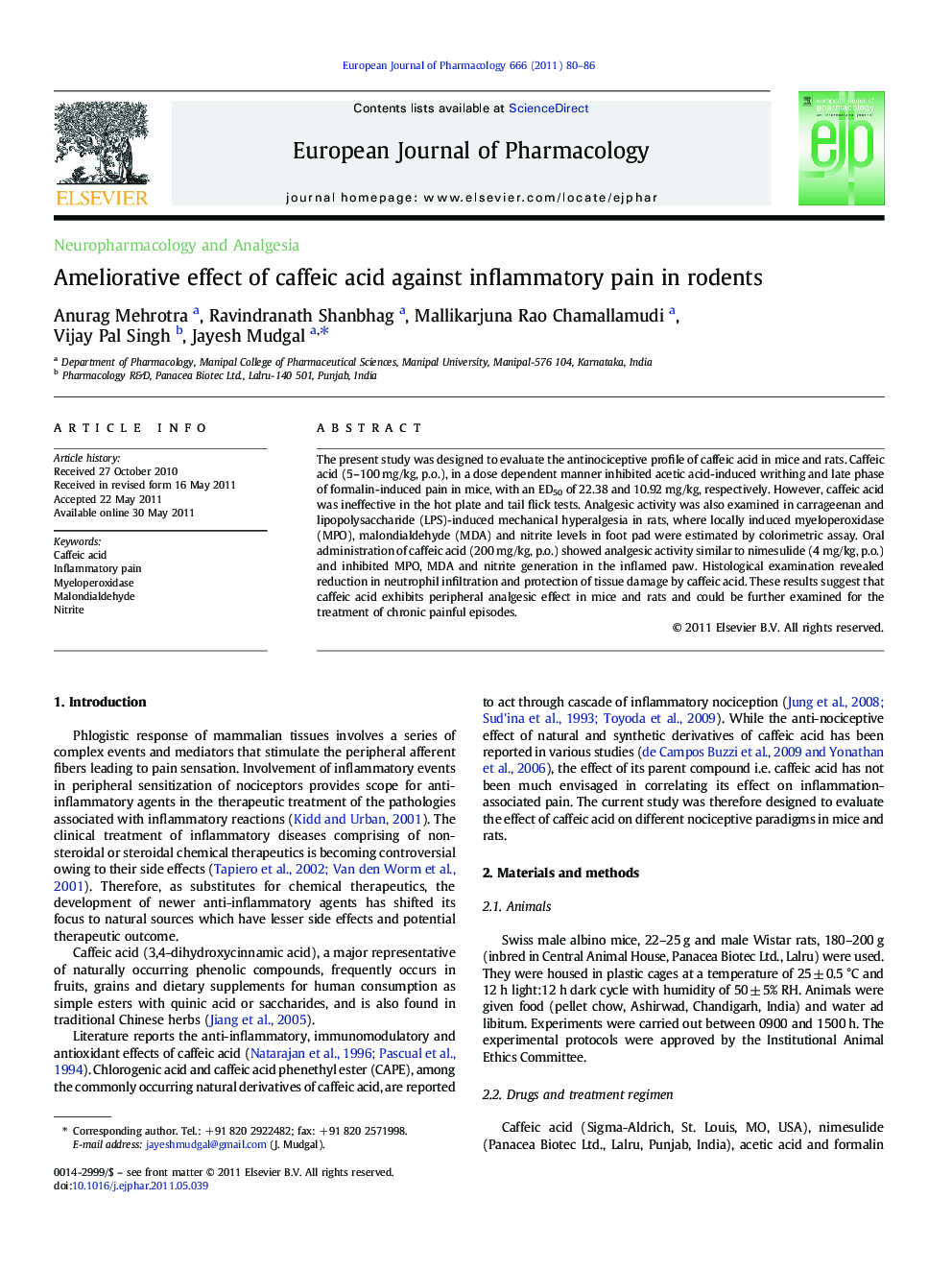| Article ID | Journal | Published Year | Pages | File Type |
|---|---|---|---|---|
| 2532627 | European Journal of Pharmacology | 2011 | 7 Pages |
The present study was designed to evaluate the antinociceptive profile of caffeic acid in mice and rats. Caffeic acid (5–100 mg/kg, p.o.), in a dose dependent manner inhibited acetic acid-induced writhing and late phase of formalin-induced pain in mice, with an ED50 of 22.38 and 10.92 mg/kg, respectively. However, caffeic acid was ineffective in the hot plate and tail flick tests. Analgesic activity was also examined in carrageenan and lipopolysaccharide (LPS)-induced mechanical hyperalgesia in rats, where locally induced myeloperoxidase (MPO), malondialdehyde (MDA) and nitrite levels in foot pad were estimated by colorimetric assay. Oral administration of caffeic acid (200 mg/kg, p.o.) showed analgesic activity similar to nimesulide (4 mg/kg, p.o.) and inhibited MPO, MDA and nitrite generation in the inflamed paw. Histological examination revealed reduction in neutrophil infiltration and protection of tissue damage by caffeic acid. These results suggest that caffeic acid exhibits peripheral analgesic effect in mice and rats and could be further examined for the treatment of chronic painful episodes.
Research highlights► Caffeic acid was evaluated for analgesic activity in mice and rats. ► Caffeic acid, dose dependently, attenuated chemical-induced nociception in mice. ► Effective against LPS- and carrageenan-induced mechanical hyperalgesia in rats. ► Treatment with caffeic acid reduced neutrophil infiltration and tissue damage. ► Free radical and nitric oxide-mediated hypernociception was alleviated.
